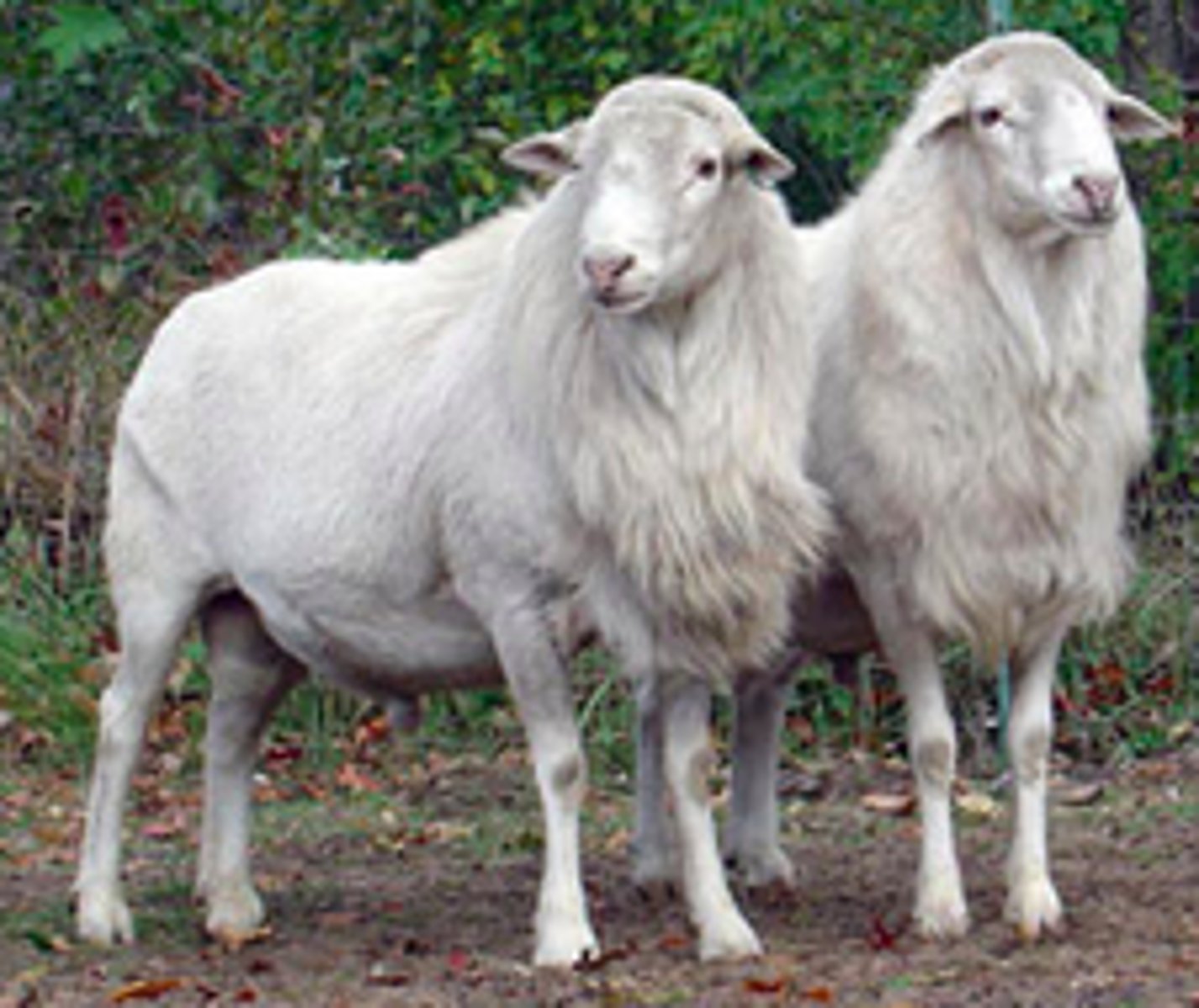Sheep and Goat production Exam 1
1/106
There's no tags or description
Looks like no tags are added yet.
Name | Mastery | Learn | Test | Matching | Spaced |
|---|
No study sessions yet.
107 Terms
why were sheep more historically important than now
meat, wool, milk etc
wool made them very important but dependence for wool has changed since being replaced by synthetic fibers
synthetic fibers versus wool
wool has contaminants such as grease, dirt, grass, burrs but synthetic does not
synthetic are all same length diameter and strength and are also more cost effective
what gave birth to synthetic fibers
petroleum industry by products so it led to sheep industry decline, sheep numbers are constant
goat numbers
increasing specifically meat goats, angora mohair goats used for fibers so was affected by wool/mohair decline so numbers dropped
now meat goat increasing while angora decreasing
what has really changed in the industry
fiber producing breeds versus meat producing breeds
texas
largest wool producing state in the country
not enough sheep in the US to support the demand so still import wool from Australia and New Zealand
until when was wool profitable with a high demand
after world war two
wool act of 1954
give producer incentive to produce fibers, give guarantee total price for your wool
tax on imported wool and mohair was used to fund the program
clinton and wool act of 1954
clinton did away w incentive program in a 3 year phase out because synthetic fiber invention began decline of wool sheep. after no program severe decline in sheep and goat numbers. angora industry almost died out
in some communities deer for hunting replaced goat
doing away w program just accelerated what would have already happened but result was painful fir 10-15 years
first sex class of goat got rid of in angora goats
whether goats
nanny goats were next but they used them to breed to boer meat goats
if not 100% angora no mohair value
now there is small but profitable sustainable population of angora
what type of goat has seen an increase
meat goats steadily increasing spanish and boer goats
sheep increase and decrease
increase in hair sheep decrease in wool sheep
main driving force is consumer which has allowed hair sheep and meat goats to find their place
what increased the demand for goat and lamb
ethnic consumers
could be religious or geographic bc of lack of land, soil, resources to raise beef. sheep and goat can eat brush which is better suited for geographically challenged countries
ethnic consumer want smaller sheep with tail and testicles
religious sacrificial lamb is unadultered and makes a premium
what 2 things make sheep and goat less attractive than cattle
fencing and predators
questions to ask when selecting a sheep breed as a producer
what is application? limitations? where used successfully?
alot of breeds we dont need because others do it better
choosing sheep breeds
environment- hot, dry, wet etc (goat more limited than sheep)
what trying to produce?- if fiber what kind? volume length weight of wool or would wool be in the way? wool can be a liability do you have a shearer or somewhere to market the wool?
what trying to sell- feedyard or ethnic consumer? milk or cheese? show animals? wool or mohair?
range flock sheep
way of raising that is going away because based on large land mass and self sufficient sheep that can handle production situations. low input. fits western US, 100s or 1000s of sheep manged this way. given water and maybe some supplemental feed
farm flock sheep
most today. smaller land mass. more intensive management, higher level of land and care for these animals but costs more to produce so must be more productive to be profitable so use productive breeds
show lambs/goats
great earning potential so can pay more on the animal. good commercial vs good show sheep is 2 diff directions
fine wool sheep
successful is range flock and quality wool
historically most important bc of wool but numbers dropping because wool less important
only breeds that generate high quality wool
fineness of wool means fiber diameter, spinning count is how much yarn from 1 pound so higher spinning count means more yarn. fine wool make more and softer yarn, have high spinning count 62s and higher
10-15 lbs per year of wool 50% yield finer fleece has lower yield
3-5 inches of longer fiber more valuable
tremendous variation in size. range flock low input ewe is 125-130 pounds so she wont produce fast growing efficient lambs for feedlot
medium wool sheep
cross fine and long wool sheep, wool quality variability
finex long wool cross
white open face
improve length+weight of fine wool
all polled
long wool sheep
irrelevant mostly in US
from great britian
grow alot of wool 8-12 inches
some big or little
all polled and all white
meat breeds typically
grow fast, get big, used alot in crossing, black faced mostly
hait sheep
tropically adapted and shed wool
dairy sheep
fewer sheep, fewer breeds, smallest component of industry
fine wool sheep advantages
out of season breeding, fall born lambs may be more valuable because less lambs hitting the market.
gregarious so stick together in flock
adaptable
white wool
wool quality and quantity
good foragers
longevity= more lambs per ewe so need to generate less replacement animals
tough and sturdy
can sell ewe versus retaining as replacement
fine wool bucks tougher and more durable so more breeding seasons
fine wool sheep disadvantages
slower growth rate
lighter muscled so decreases carcass value
wool blindness and body wrinkles
not good in high rainfall
size disadvantage in market lambs
lower lambing percentage bc not feasible to have twins and raise them in range flock
horns close to head, maggots in wool in wet season or horns impeding head
most complicated to select because so much potential for negative traits
merino
aka delaine
most important wool producing in the world (australia, china, new zealand, they are okay w lower lamb weights)
finest wool
not as many in US bc of growth and lamb potential
horned or polled
from spain
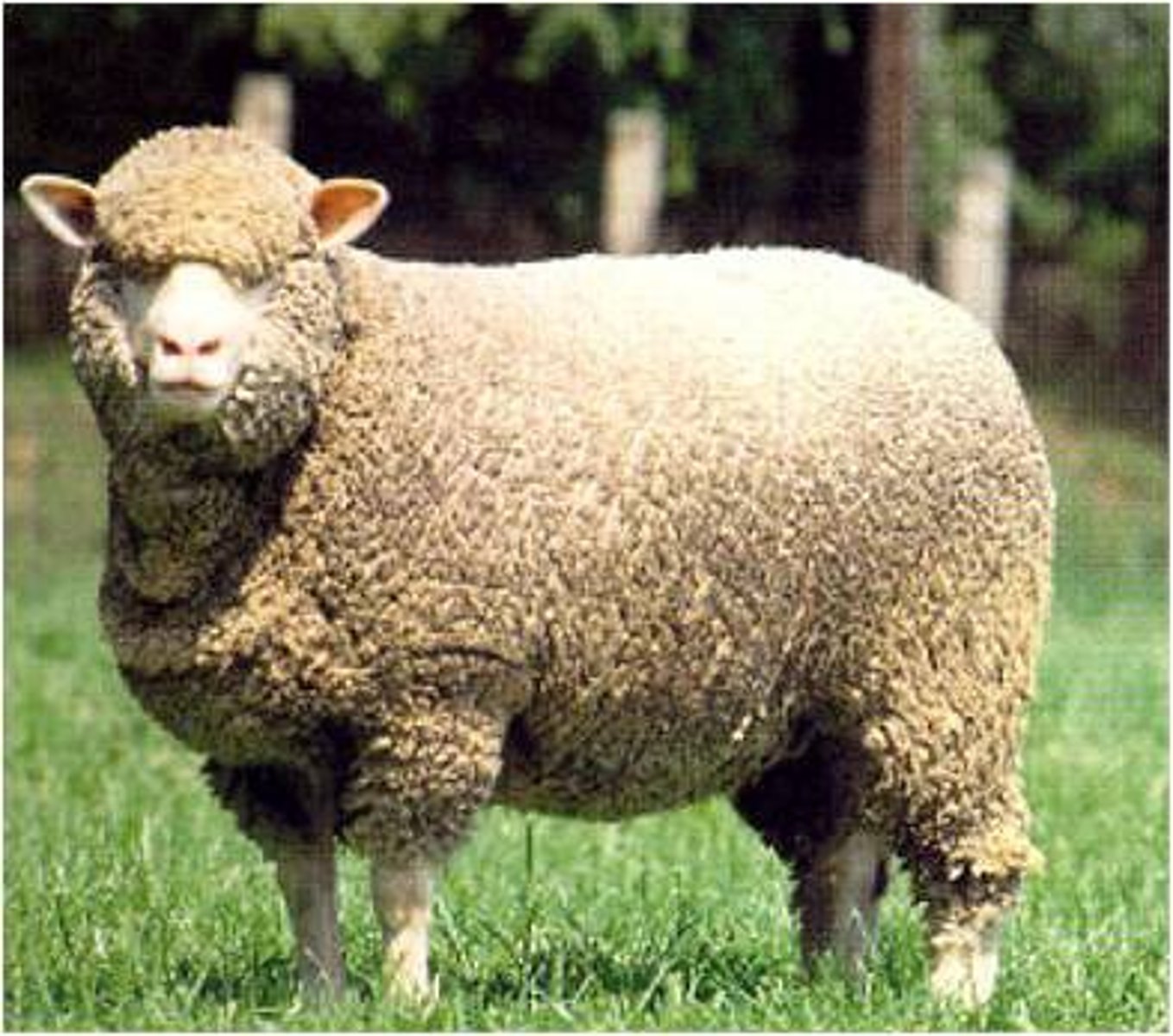
rambouillet
established from merino in france
most popular in texas and southwest, better for US markets
larger and faster growing than merino
horned or polled
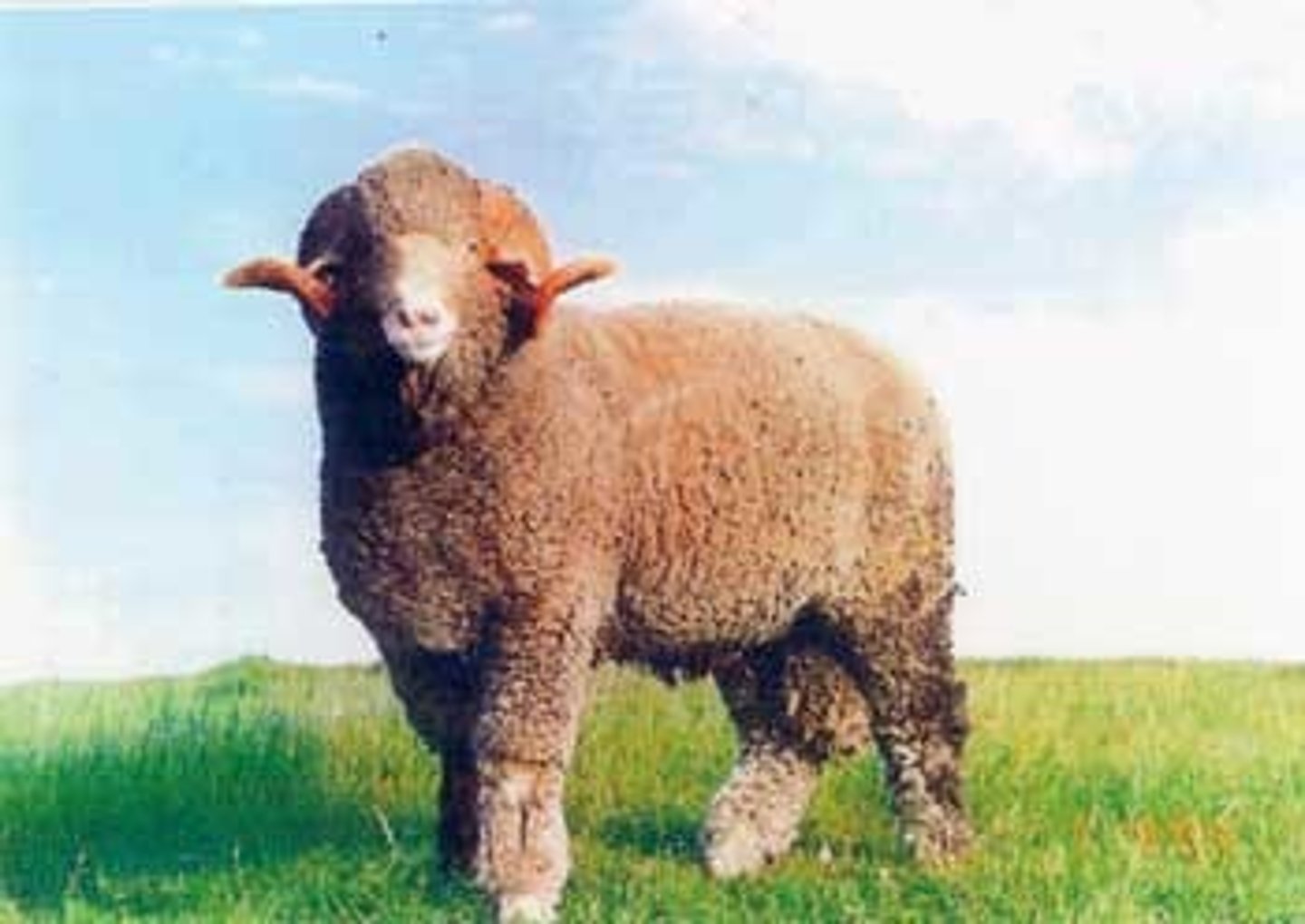
Debouillet
developed in new mexico
rambouilletxmerino
based on size and staple length
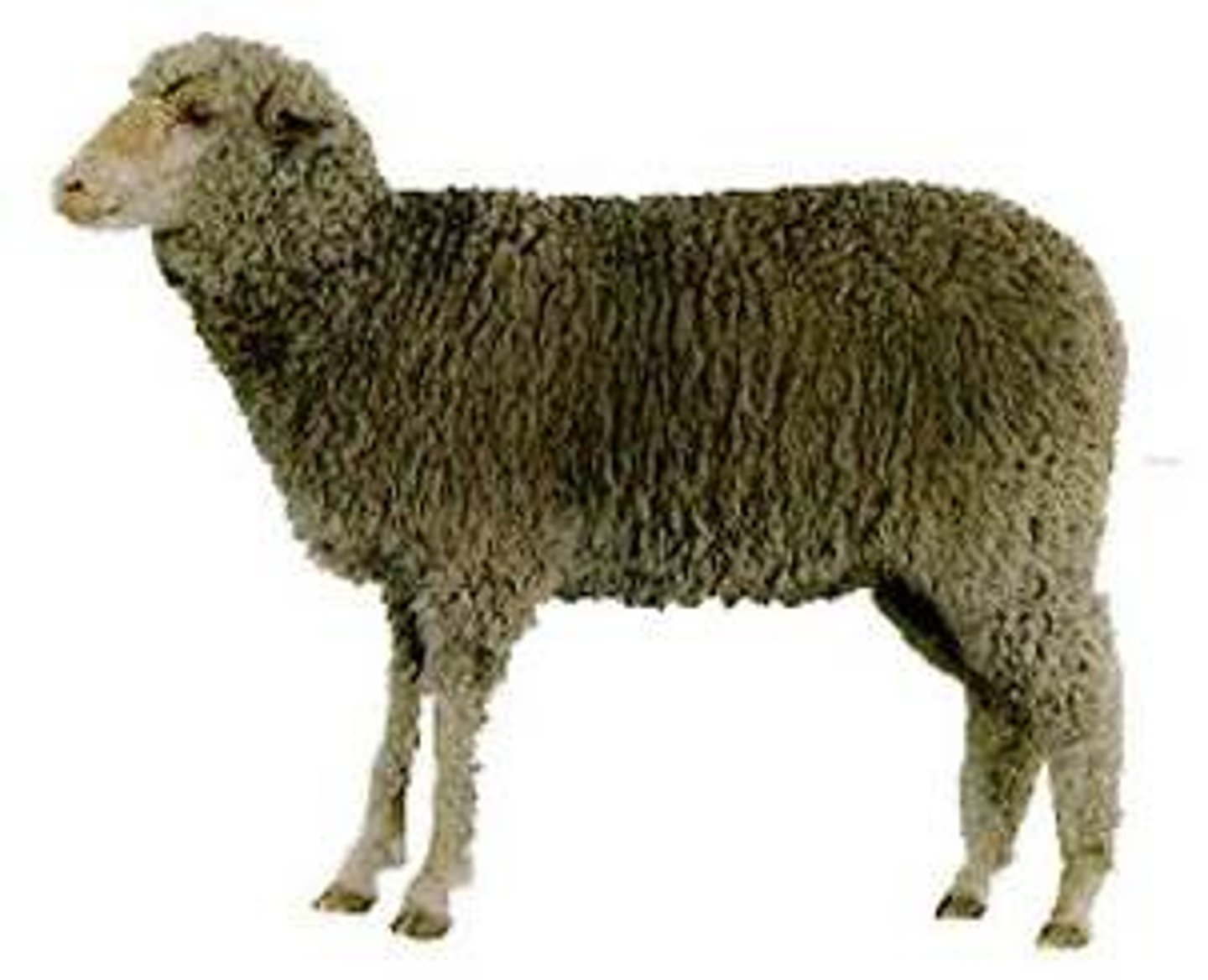
long wool advantages
- size
- crossing capability
- long staple
- heavy fleece
- good milkers/mothers
long wool disadvantages
coarse long heavy wool
price per lb lower
light muscled and fatter carcass
lincoln sheep
biggest sheep w longest staple (12 inch)
15-25 lbs of fleece
use this breed to improve others to capitalize on sheep size and fiber length

cotswold
not very good breed, little
coarse fleece in many colors so dont need to be dyed
best for hand spinning yarn(lincoln also used)
least impact of all long wool
market this wool in internet to find niche consumer

leicester sheep
used in europe for crossing w black face to get "mule" ewe to breed with blackface ram
not important in US
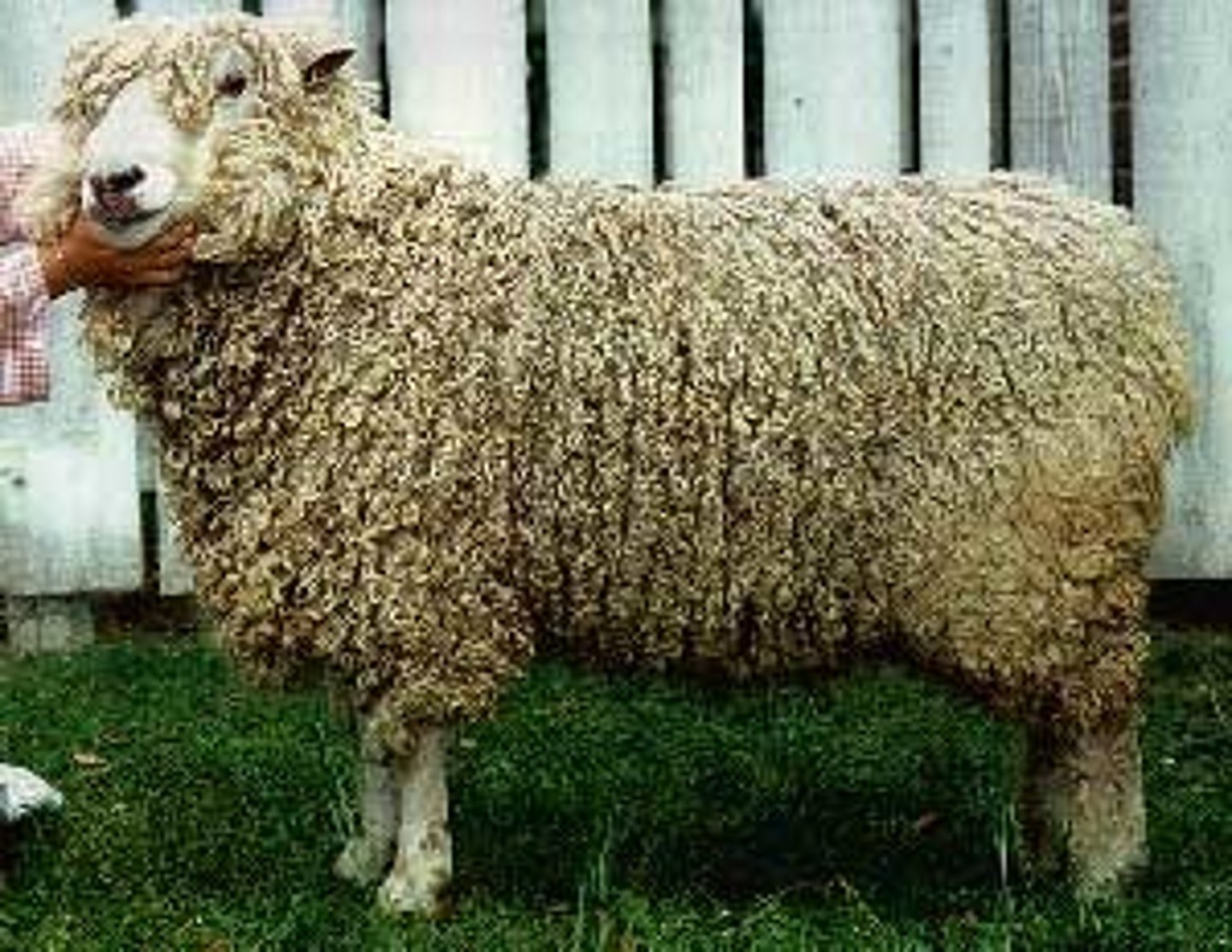
romney
shorter fiber length than other long wool, closer to fine wool in length/grade
do well in high rainfall, open wool and genetic resistance to foot rot
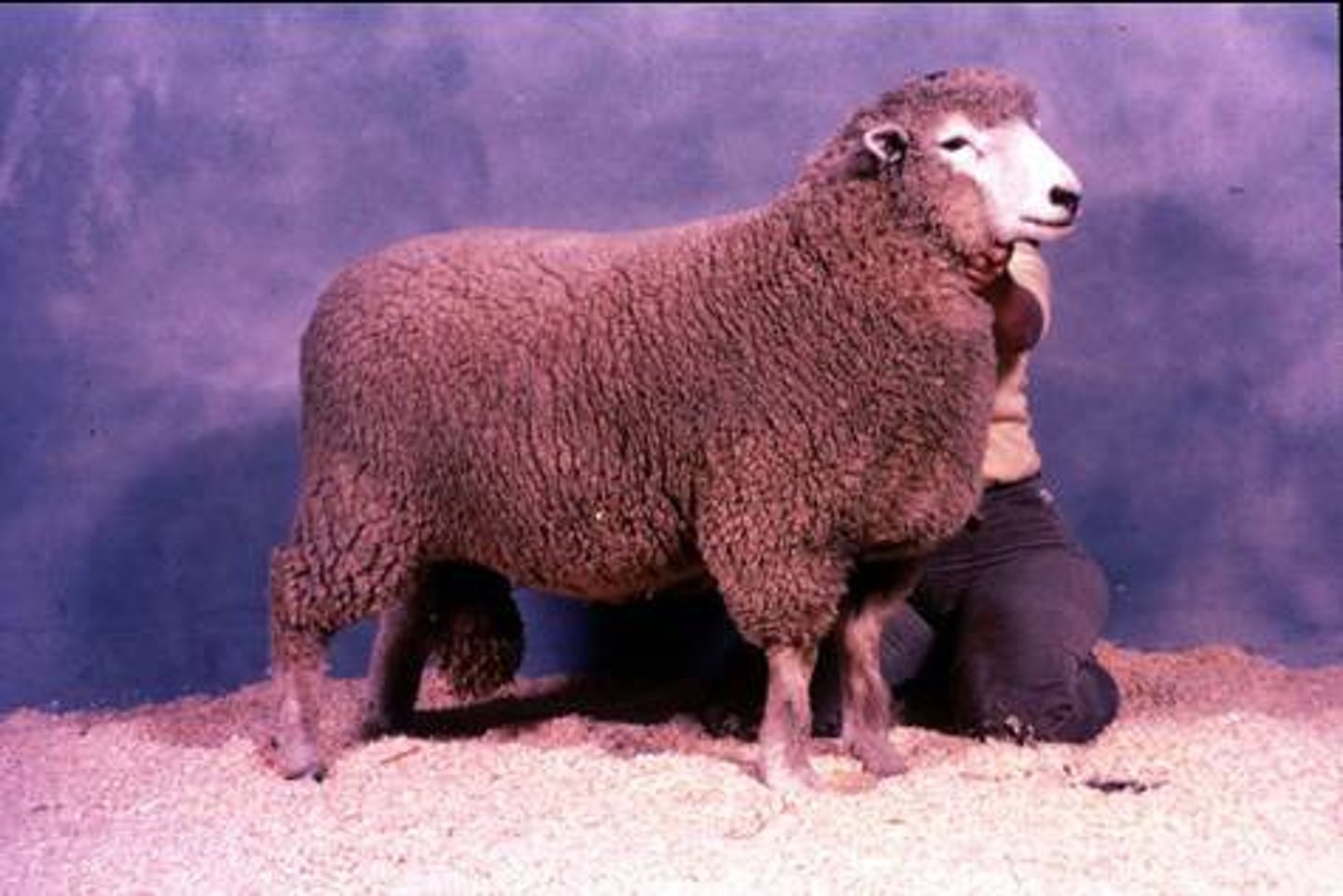
advantages of medium wool sheep
large and have heavy fleece
good under range conditions
disadvantages of medium wool
-too big for some environments
-carcass could use improvement
columbia sheep
pink nose
lincoln ramxcolumbia ewe
most used in US established in wyoming
5-7 inch 15 lb fleece
value in wool
too big for texas or new mexico
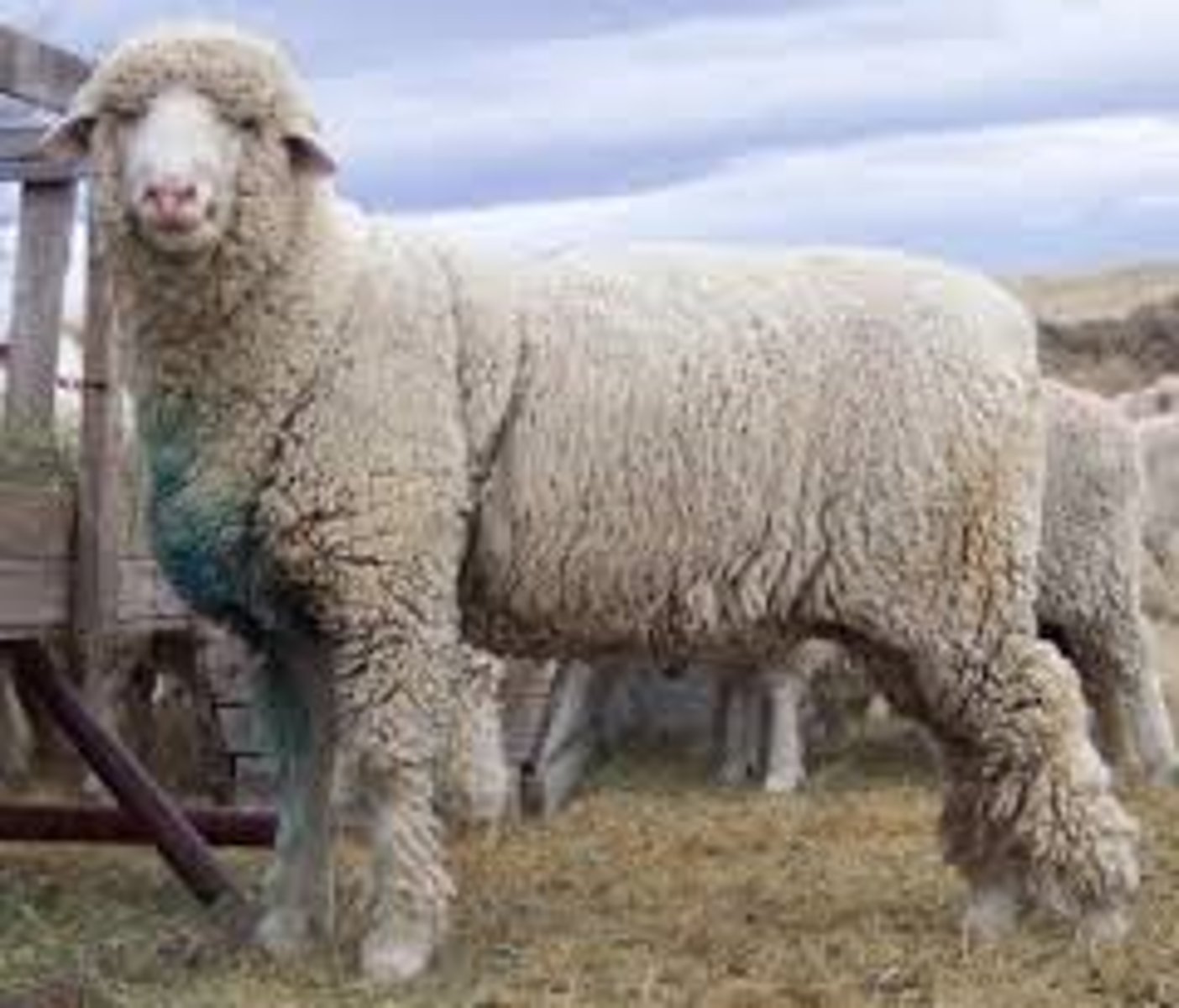
Corriedale sheep
lincoln ramx merino ewe
black nose/hooves
smaller than columbia with better wool
new zealand started
polled

Targhee
ramboullet ramx columbia ewe so 3/4 rambouillet 1/4 lincoln
developed in idaho at experiment station
not as big as columbia
useful range sheep
fine wool
growing breed, beating columbia
polled
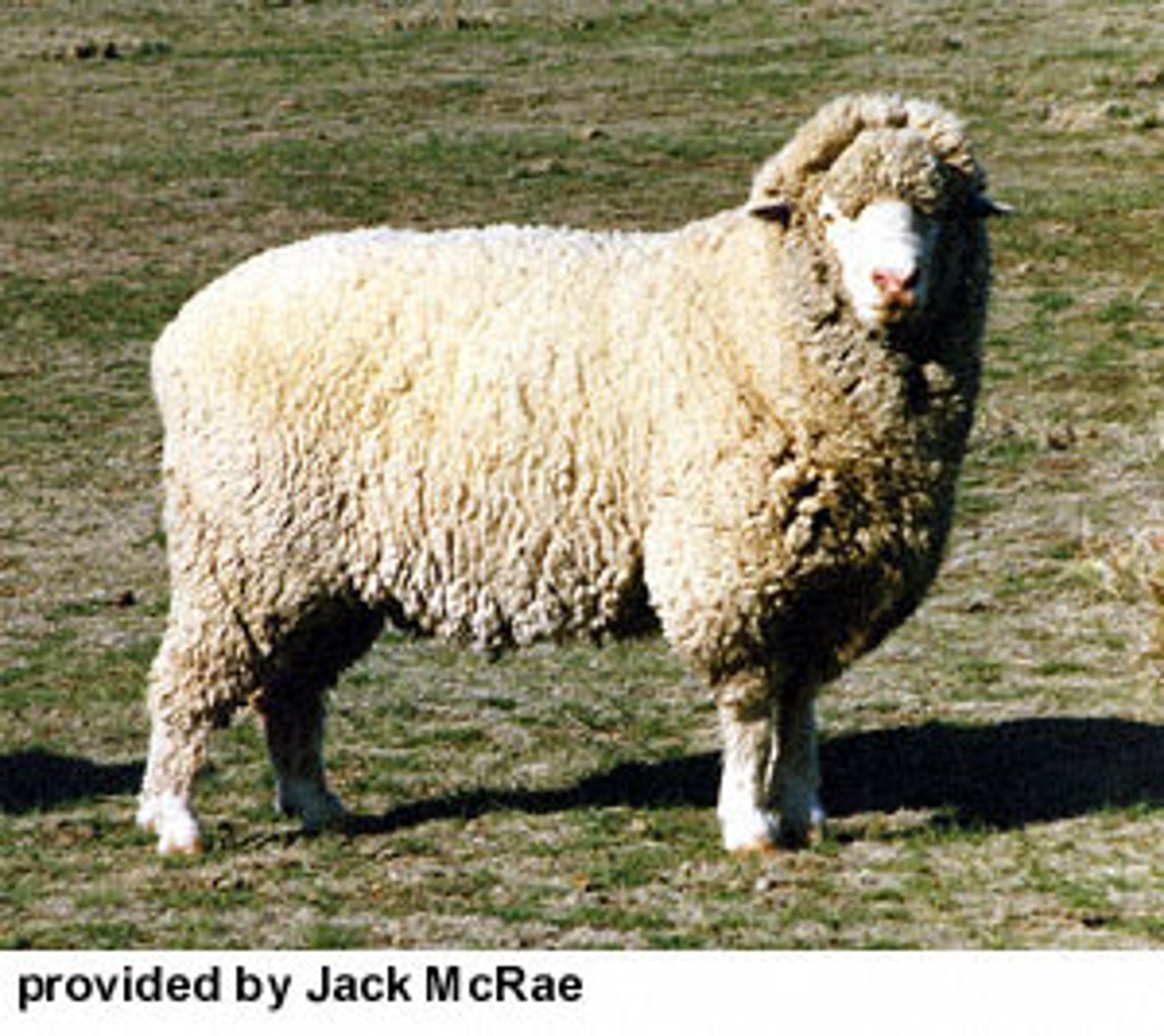
panama
rambouillet ramx lincoln ewe
reciprocal cross of columbia
adaptable in range conditions
fairly useful
small numbers
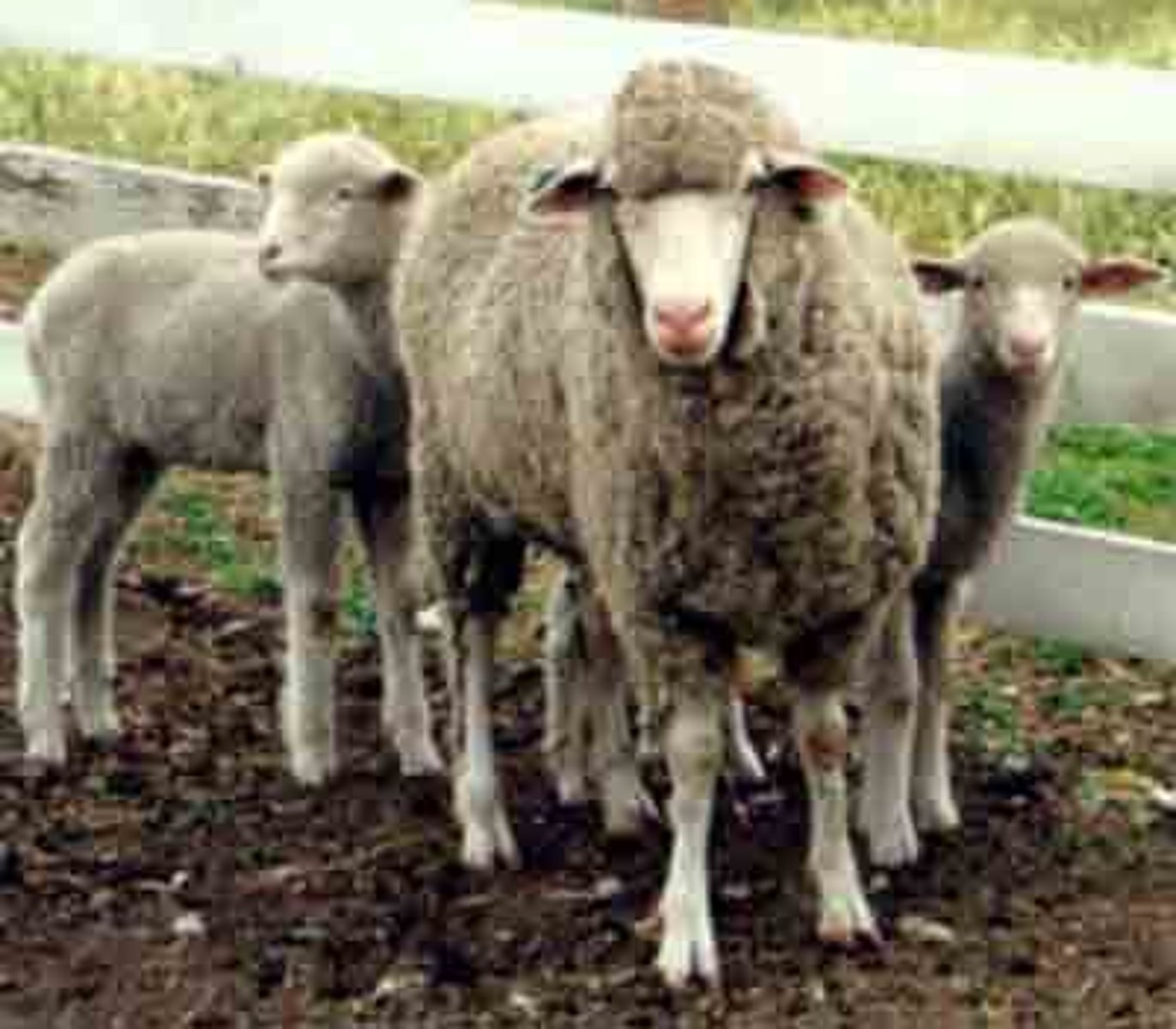
meat breeds
grow faster with higher slaughter weight, muscular
more milk and prolific expect them to have more twins and triplets
wool is liability costs more to get rid of
av show lamb producer is okay w bad mom/milk if can generate quality lambs
alot have black fiber bc black faced so degrades wool value
less flocking instinct harder to manage not as compliant
most from great britian
also called mutton or sire breeds
meat breed advantages
- good carcasses
- size
- prolific
- milking ability
- convert at higher rate
fat in the lamb industry
does not penalize carcass for being too fat, no advantage if more than 2/10 inch back fat
meat breed disadvantages
-black fiber
-little flocking instinct
-wool blindness
-lambing problems (heavy lambs)
-wool liability
Suffolk and Hampshire
barely any pure of each bc crossed alot
2 most important meat breeds
suffolk was 1 25 years ago but now the hampshire
tables turned bc suffolk has higher rates scrapie and spider lamb
hampshire wool goes over head and to the knees
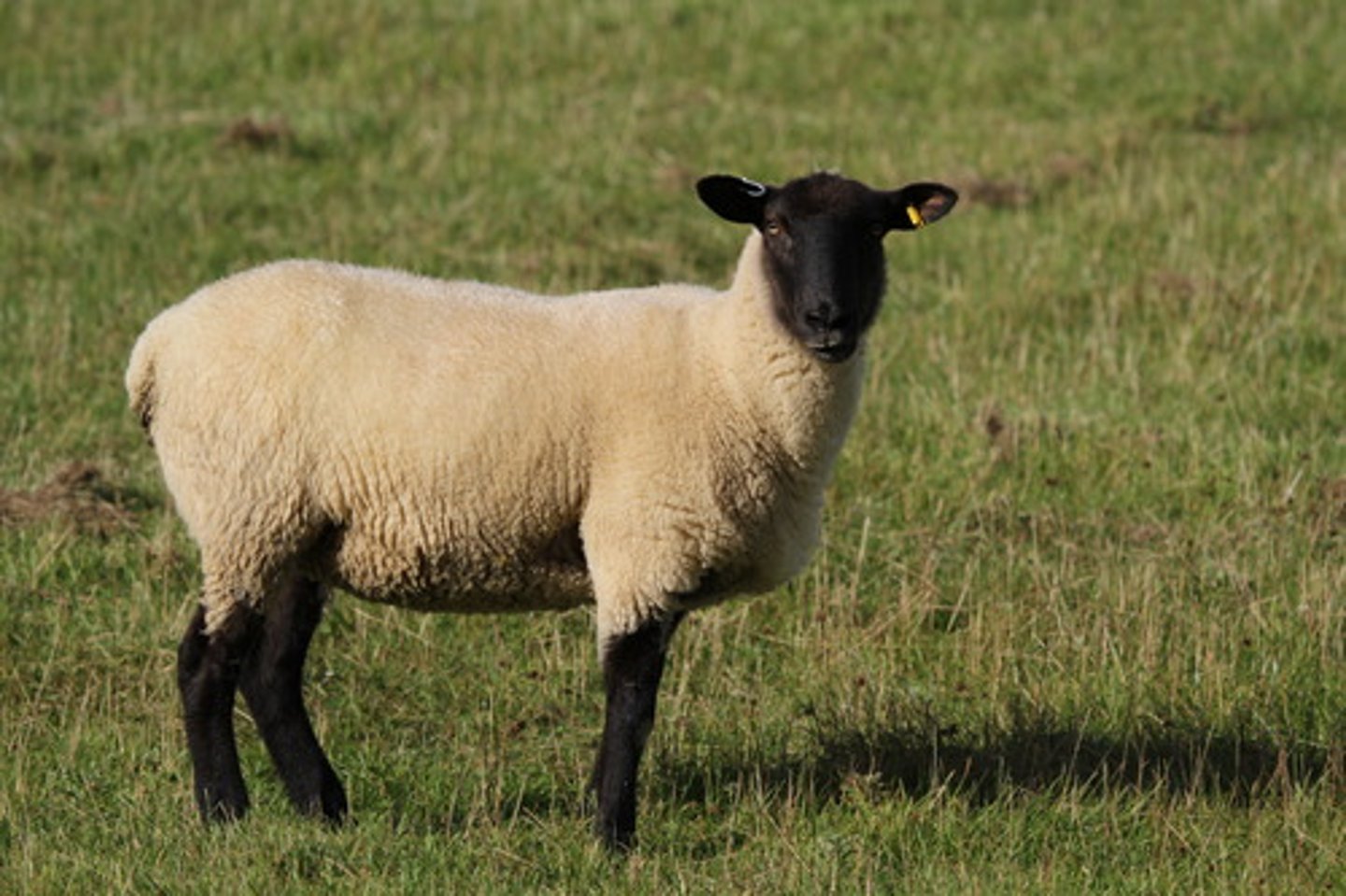
shropshire
basically smaller hampshire
more face cover
potential wool blindness
fairly irrelevant
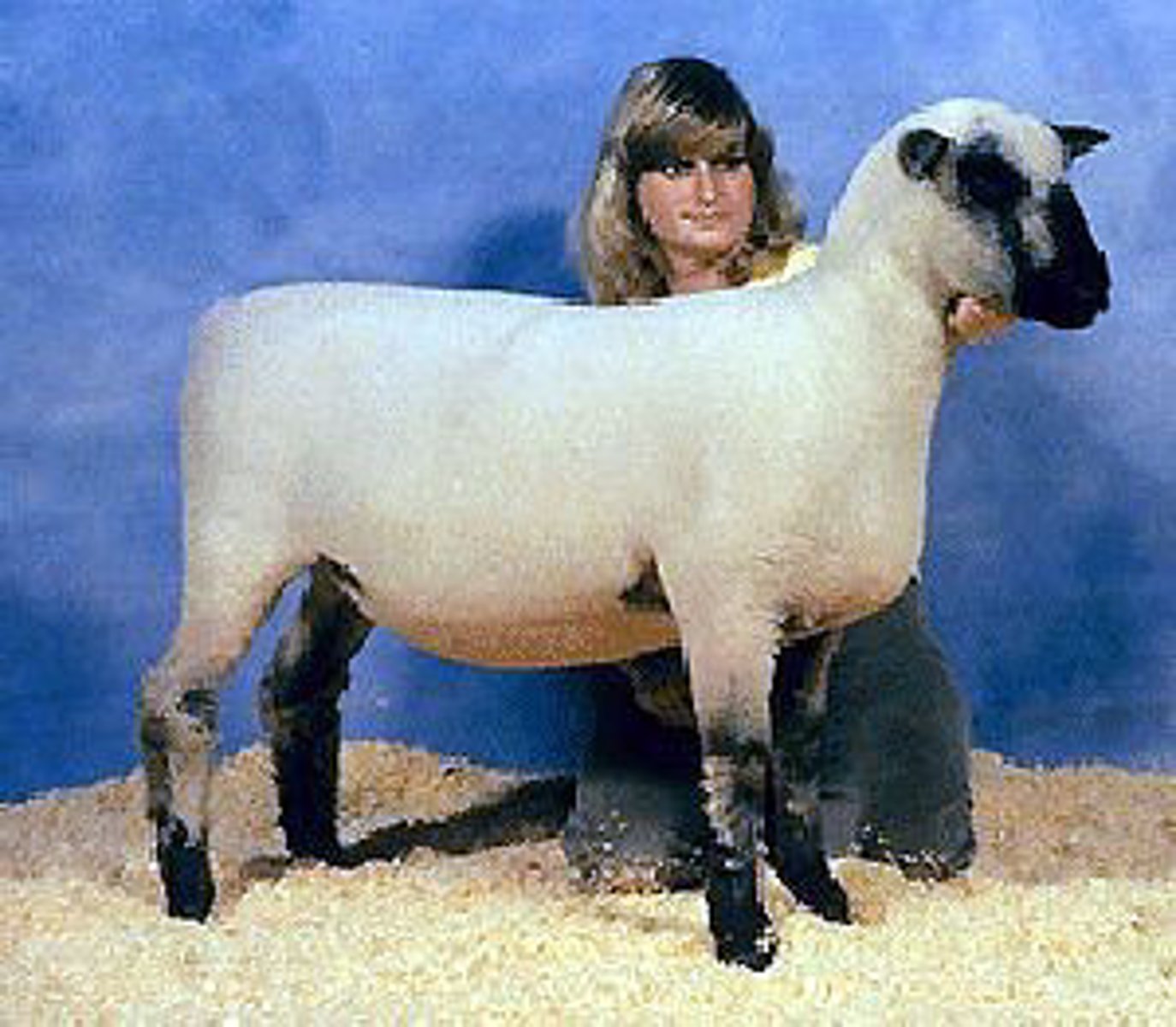
dorset
white meat breed advantageous bc if crossed w fine wool lamb is still white
breeds out of season and has high repro rate
milk well
both sexes horned or polled
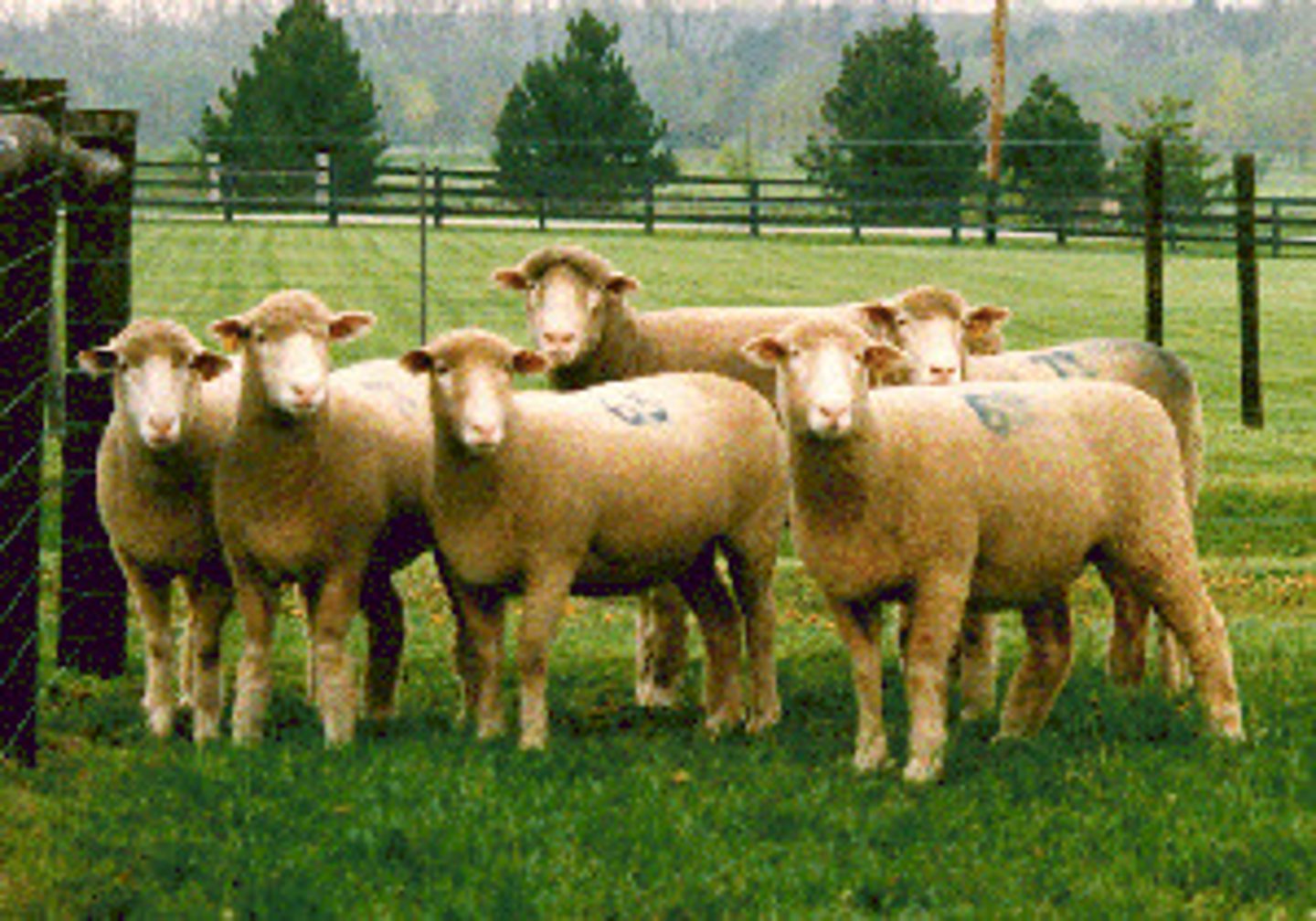
oxford
hampshire x cotswold
long heavy fleece
irrelevant
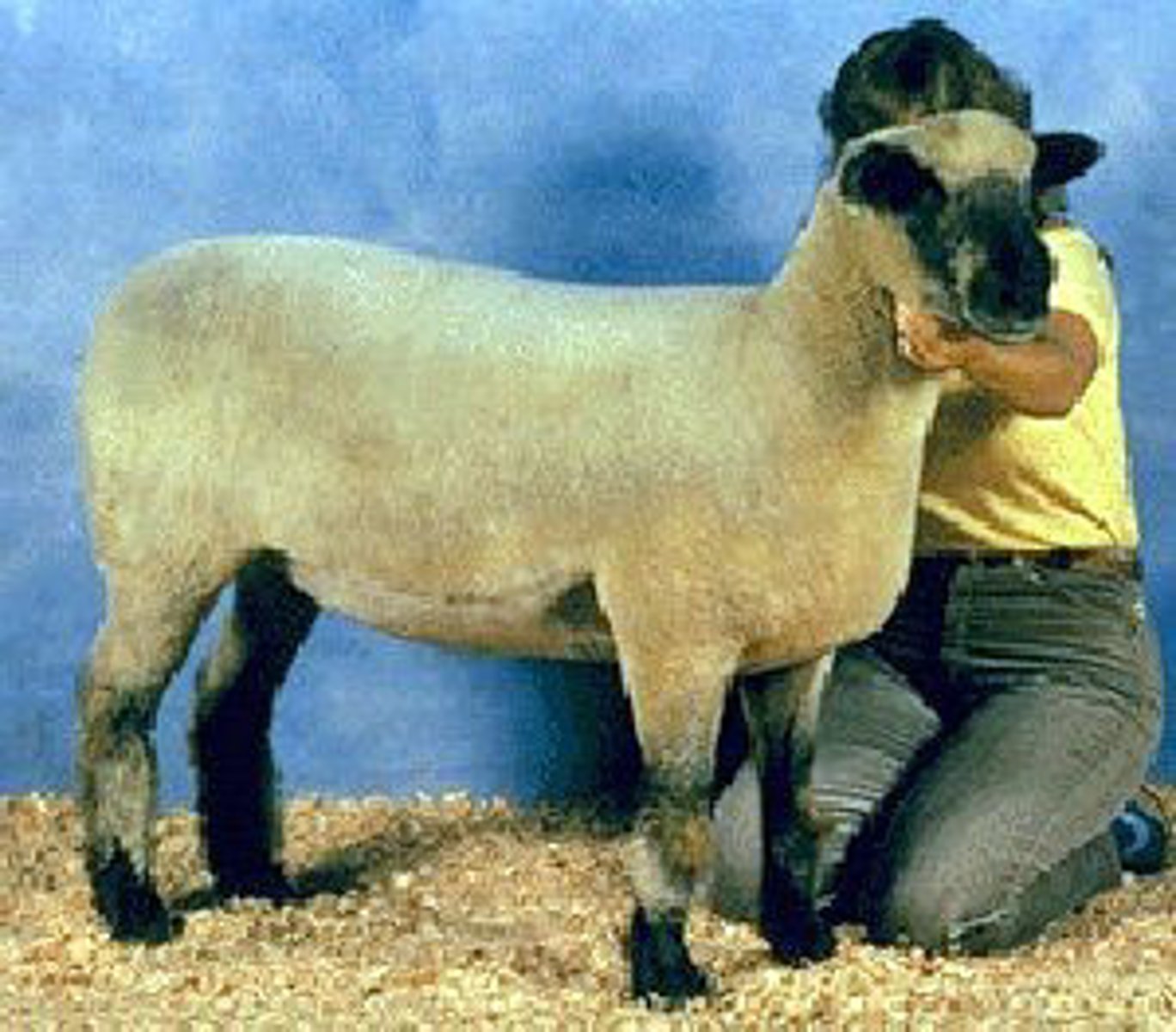
southdown
oldest of english breeds
alot trace back down to southdown
small didnt fit commercial industry of US
repro is good
quality carcass and grow fast to end weight (still too small)
relevant commercially for ethnic consumer

cheviot
old breed
scotland
durable, tough, cold wet rigid environment
small
northeast some midwest
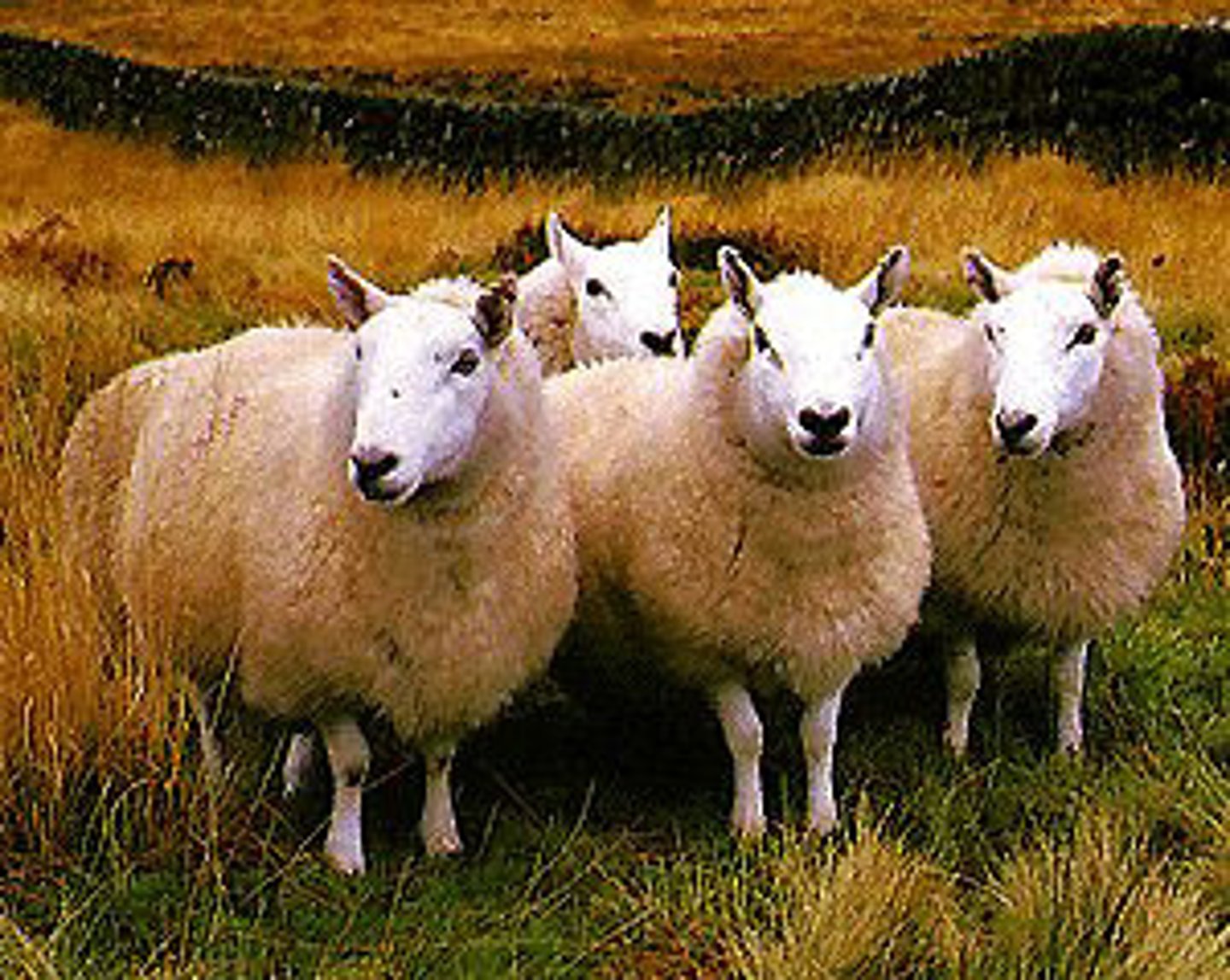
montadale
columbia x cheviot
(so 1/4 ramboillet 1/4 lincoln and half cheviot)
not very relevant
midwest

texel
holland
small
new, 80s
important in europe bc good carcass
too small in US
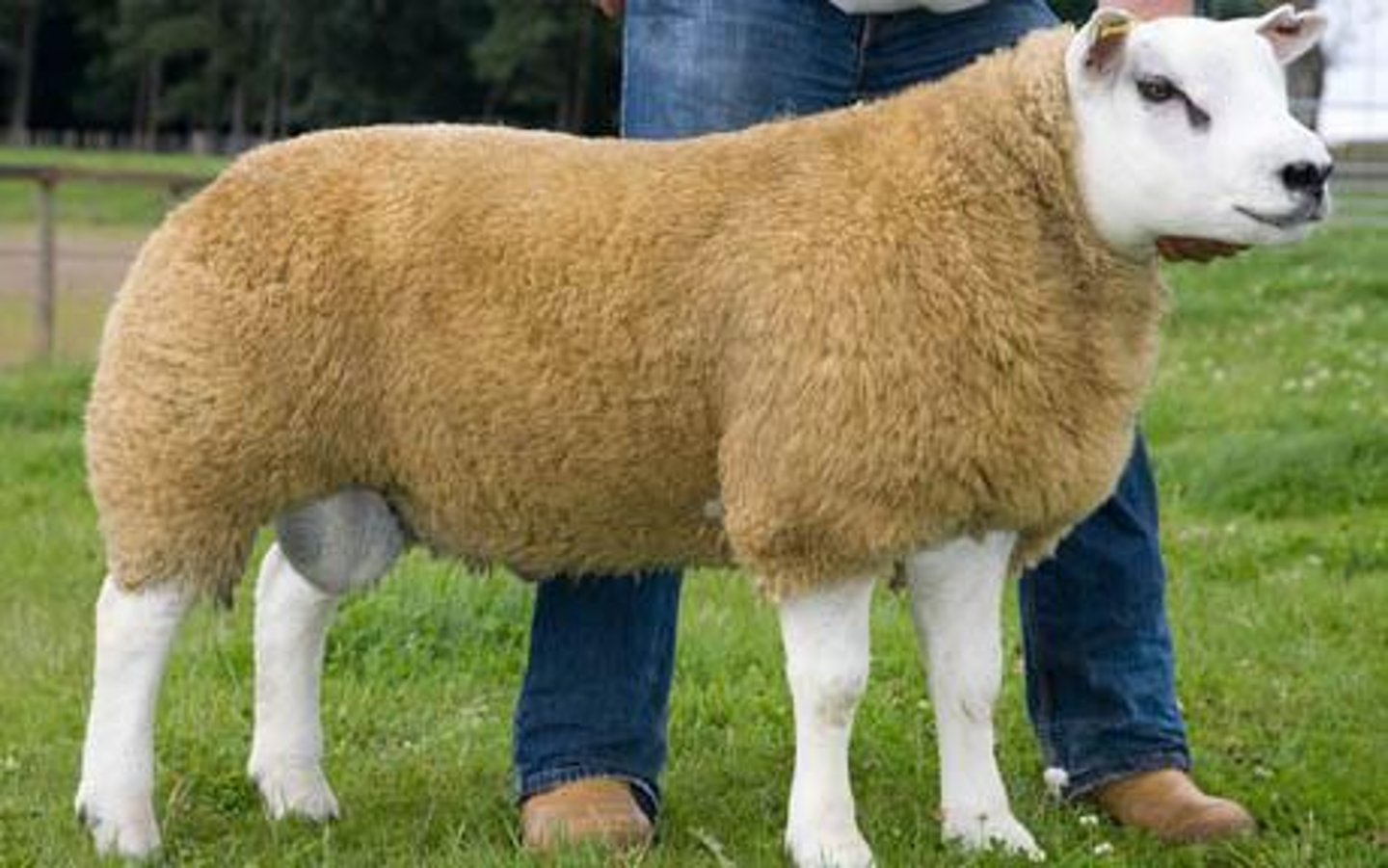
not good at much breeds
not good muscle or wool
dont grow fast
maternal side, prolific can be good
finnsheep
worst in muscularity
4-6 lambs and raise them
good milk
light muscle, slow grow
resiliant and tough
small, frail
from finland
bad wool
polypay
- 1/4 Rambouillet X 1/4 Dorset X 1/4 Finn X 1/4 Targhee (ramboiullet x columbia)
- True composite sheep
- White & polled
- Decent sheep
- Wool has value
-really good females
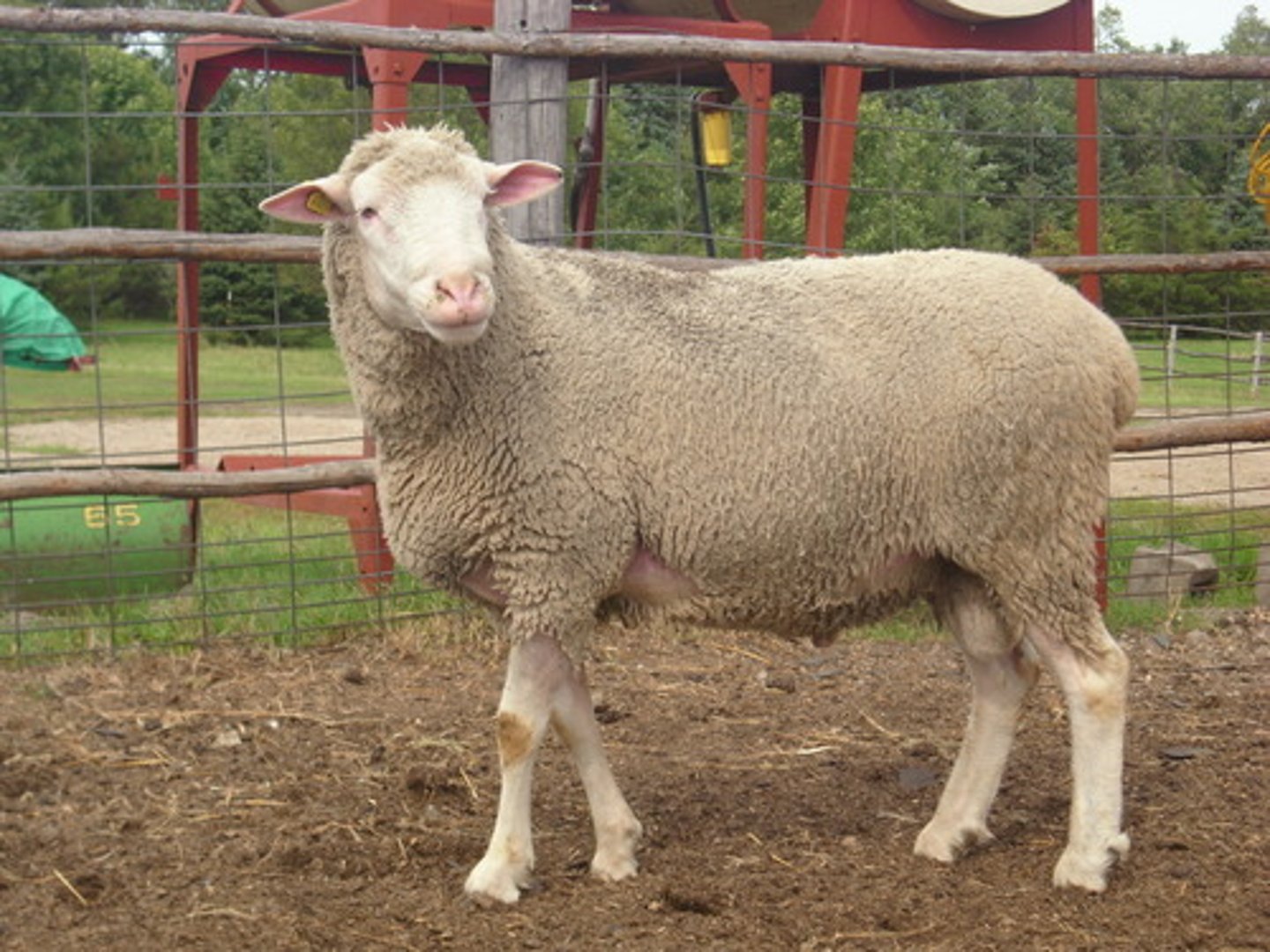
boorola merino
highly inbred
not great as true merino or rambouillet
trace back to one ewe
single gene effect( F gene for fertility means prolific)
highly reproductive

romanov
terrible wool ( mix of hair and wool)
dark
prolific and tough
excellent lamb survival
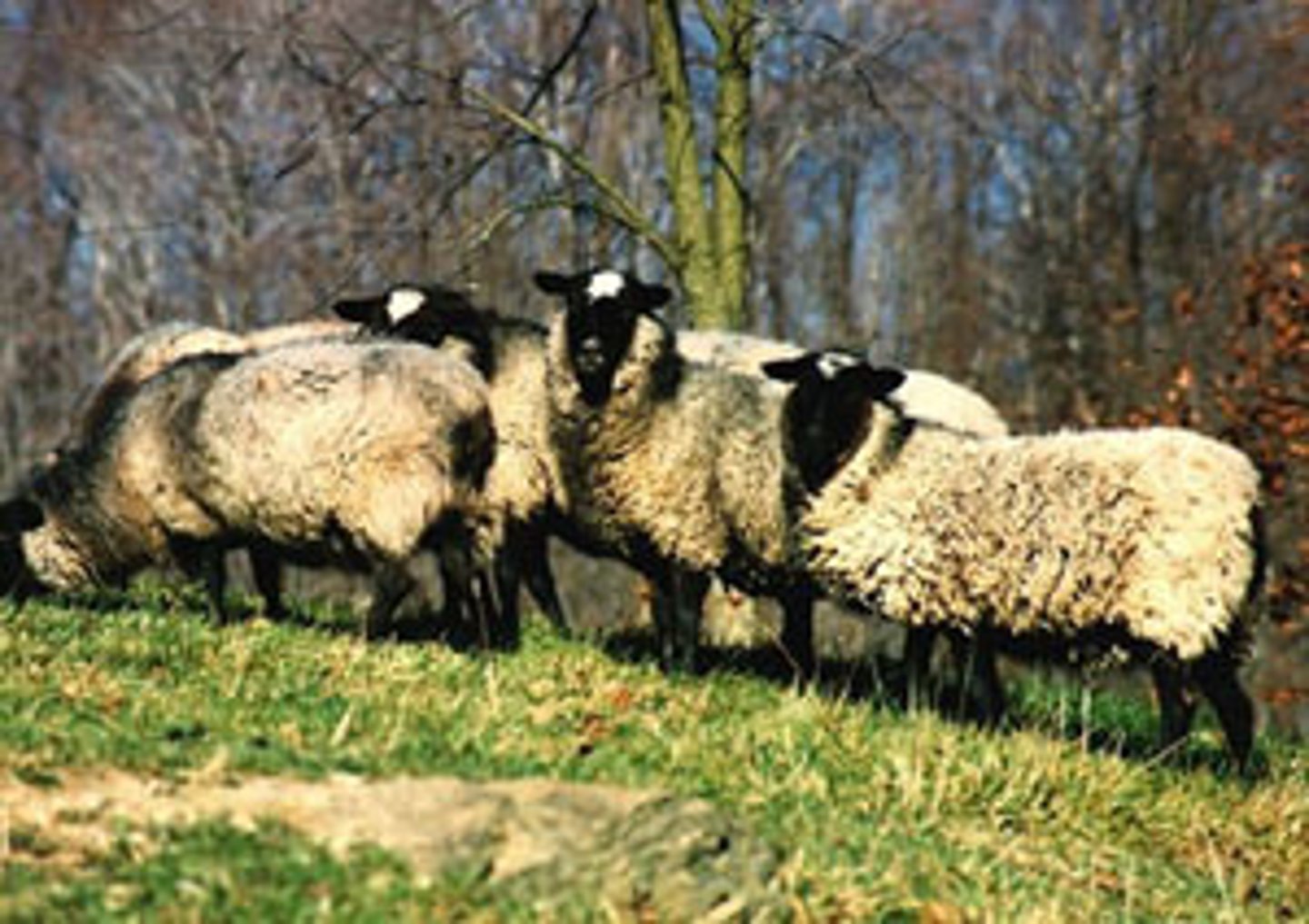
uses for wool
clothes, fabrics, yarn, felt, carpets, insulation, rug pads, baseballs, tennis balls
top 5 wool producing nations
-Australia
-China
-New Zealand
-Argentina
-Iran
top producing wool states
texas
california
wyoming
colorado
utah
av fleece is 7.4 lbs
wool warehouses
nearly all wool in US marketed this way, abt 20 in texas
wool pool
A collection point for wool from many producers who combine their wool for marketing
direct marketing of wool
Direct marketing of wool can include selling wool at farmers markets, online, or on-farm. Direct marketing can be labor intensive and expensive, but it can also help build a loyal customer base
processing of wool steps
shearing
scouring
carding
combing
shearing wool
needs a shearer, 63% done during april, may and june
removes fleece from sheep
scouring wool
removing impurities and grease from wool
"washing the wool"
carding wool
disentangles and separates scoured fibers
pass through system of wire rollers to straighten and remove any remaining vegetable matter
combing wool
arranges fibers in a parallel configuration
removes noilage (noilage is a measure of how much wool is lost or deemed unusable during the combing stage, which aims to create a uniform, parallel fiber strand for worsted yarn production)
major processors in the US
Burlington, Pendleton, and Forstmann
US mills must purchase wool from new zealand and australia to fulfill needs
largest wool buyers
china and hong kong
use 20% of worlds clip
apparel wool
generally smaller in diameter
most of wool in US
2 manufacturing systems of apparel wool
Worsted System Uses wool that has not been previously processed Example: men’s suits
Woolen System Uses wool that has not been previously processed as well as short fiber-by-products(noils), recycled yarn Example: blankets, overcoats, women’s suits
value determining characteristics
weight
yield
staple length
av fiber diameter
others:
character
uniformity
yield
% of clean wool fibers
varries greatly based on breed, handling, soil type, amount or type of range cover
finer wool is
lower yielding
coarser wool is
higher yielding
average fiber diameter
Important in Determining Overall Quality and Value
coarser decreases price
3 major wool grading systems
american blood system
spinning count
micron diameter system
american blood system
-Derived from the fine wool of the Merino and Rambouillet breeds
-Fine, 1/2 Blood, 3/8 Blood, 1/4 Blood, Low 1/4, Common and Braid
spinning count
number of hanks (560 yards) that can be spun from 1lb of the wool top (wool that has been sheared and scoured and carded and combed)
micron diameter
newest and most accurate
micron is 1/25,400 of an inch, lower the micron count, the softer and finer the wool
fine wool
64+
1/2 blood
60-62
3/8 blood
56-58
1/4 blood
50-54
low 1/4 blood
46-48
common and braid
below 44s
average staple length
length of fibers determines which system may be used to spin the fibers into yarn.
3 categorized wool classes: staple, french combing, clothing
tender wool and breaks
- greatest contributing factor to waste
- associated with environment, nutrition and disease
breaks
staples that pull apart very easily in a specific position at every location within a fleece
Character of wool
subjective
color, crimp, condition (soft or harsh)
purity:
Freedom from black or brown fibers, kemp, and hair
Will discount the total price of the fleece
Kemp is hollow white fibers that will not accept dye
uniformity
variation in grade and length within 1 fleece
variation in diff areas
diff areas of sheep body and wool length
Shoulder –longer and finer than average
Side/Back – long and average fineness
Britch – longer and coarser than average
Belly – short and fine
belly wool excessive amount causes fleeces to be highly variable and is discouraged against by commercial wool producers
hair sheep
more important now than ever before
no shearing
parasite resistance
hot humid environments, high rainfall, heat resistance
- have alot of grass but cant usually house sheep bc of parasites
- these are tropical sheep so physiologically deal w them, may have to deworm some but not nearly as much
sheep type ethnic consumers prefer
low in put, low labor
leather- don't have traditional pelts but can use pelts as leather
management is easier no castration or docking (for ethnic consumer)
a lot of people transfer to these from cattle bc of land mass
pretty prolific, pretty good repro rate, breed out of season, good mothers
tough and durable
some lacking muscle and growth rate
how to avoid issue of hair sheep lacking muscle and growth rate
market to ethnic consumer straight off the ewe at a light weight avoid these issues and is satisfactory for ethnic consumer
dont go overboard trying to selectively breed for other traits bc could lose ones that make them good
barbados black belly
from barbados
polled
tough breed, one of toughest and most durable but replaced by other hair sheep
better than barbados growth wise, muscle etc.
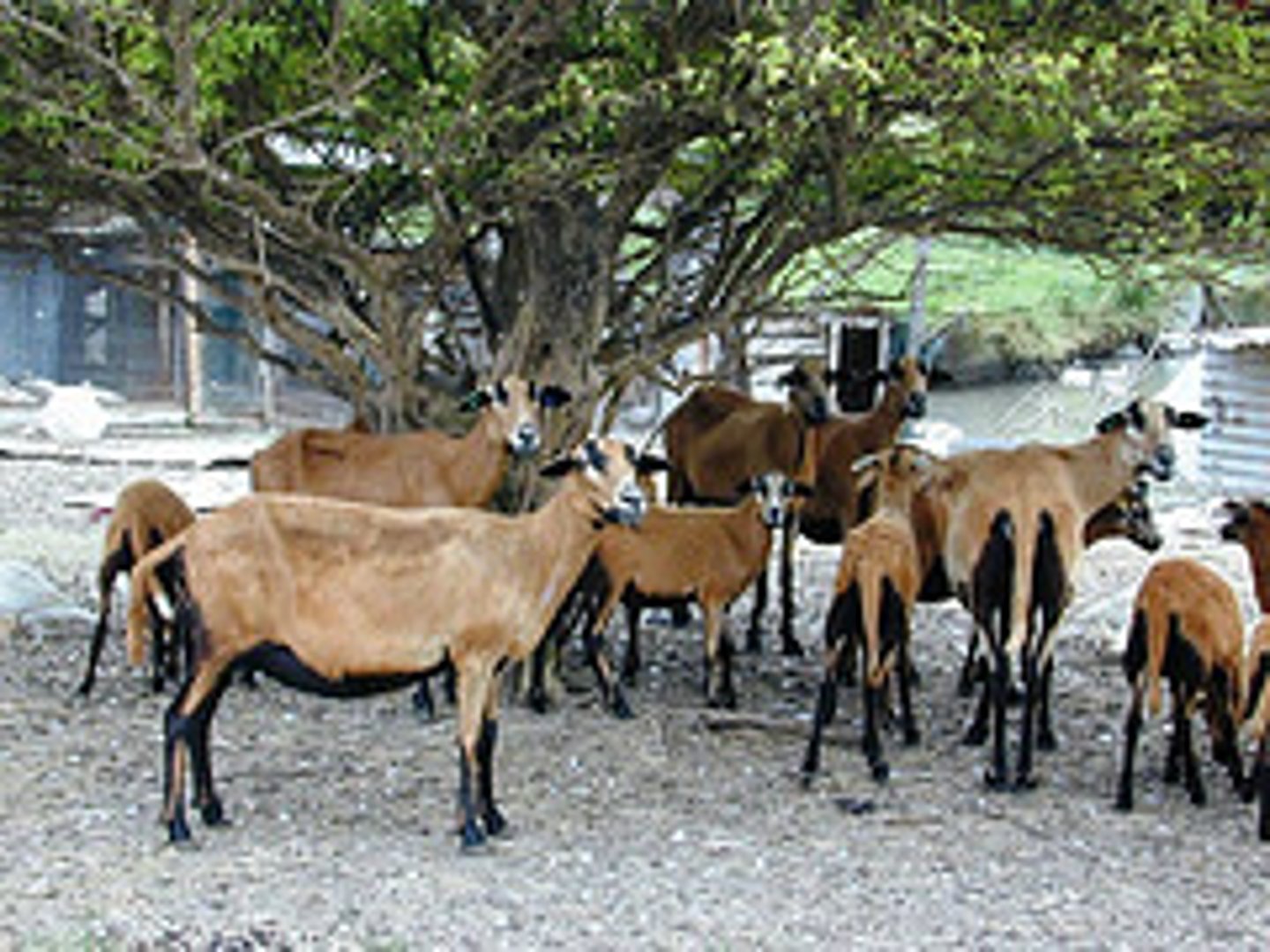
barbados
black belly became these wanted to put horns on them to hunt
done by crossing w rambouillet and mouflon
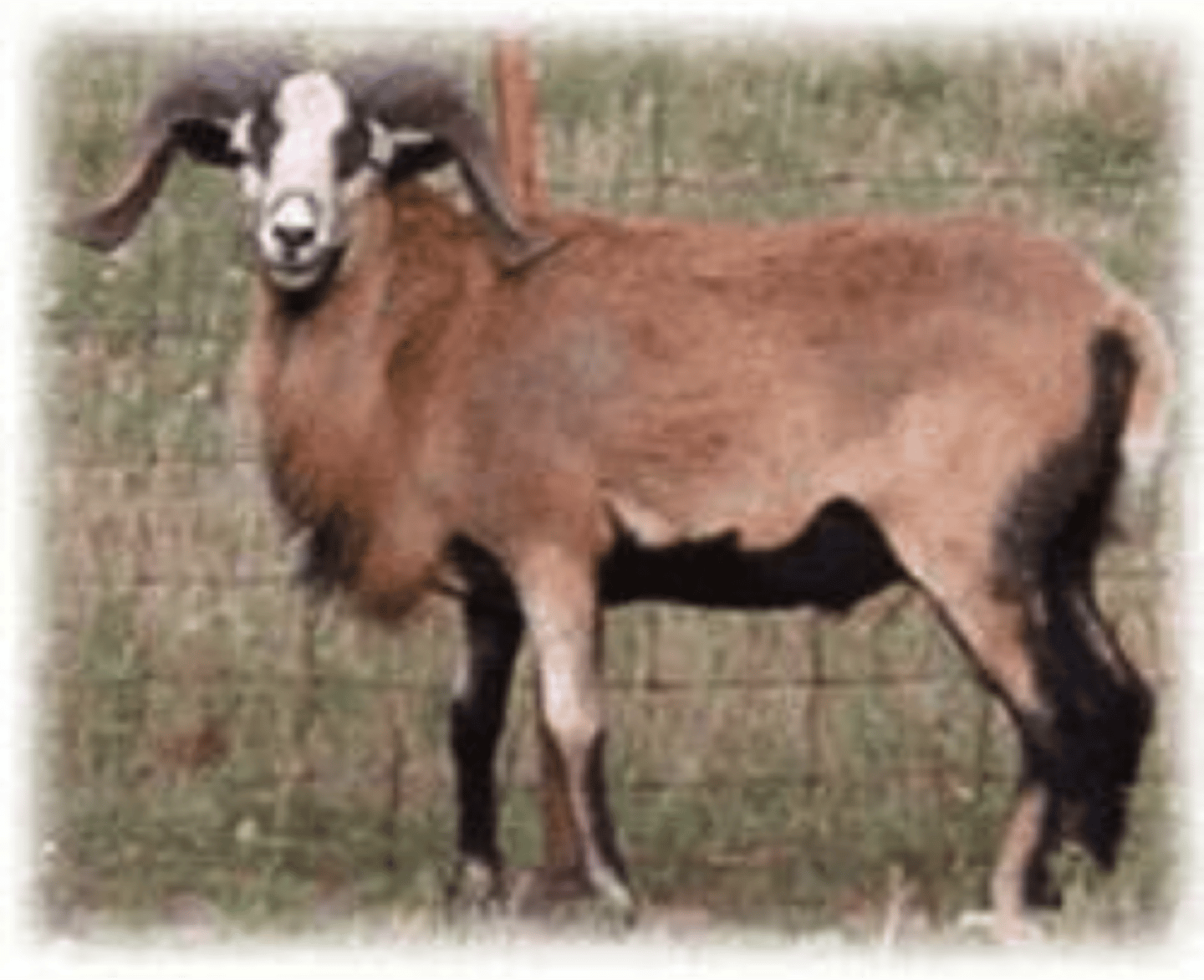
st croix
shed
from parasite infested virgin islands
white
good moms and prolific
can breed back while lactating, rare unpredictable in other species/ breeds but st croix doesnt have a lactation anestrus (means could have multiple lamb crops per year, maximize production)
fine boned and light muscled
